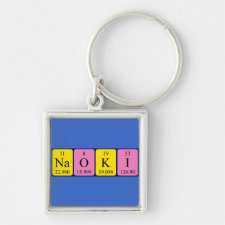
Authors: Matsui J, Minamimura N, Nishimoto K, Tamaki K, Sugimoto N
Article Title: Synthetic cinchonidine receptors obtained by cross-linking linear poly(methacrylic acid) derivatives as an alternative molecular imprinting technique.
Publication date: 2004
Journal: Journal of Chromatography B-Analytical Technologies in the Biomedical and Life Sciences
Volume: 804
Issue: (1)
Page numbers: 223-229.
DOI: 10.1016/j.jchromb.2004.01.063
Abstract: A molecular imprinting approach to construct synthetic receptors was examined, wherein a linear pre-polymer bearing functional groups for intermolecular interaction with a given molecule is cross-linked in the presence of the molecule as a template, and subsequent removal of the template from the resultant network-polymer is expected to leave a complementary binding site. Poly(methacrylic acid) (PMAA) derivatized with a vinylbenzyl group as a cross-linkable side chain was utilized as the pre-polymer for the molecular imprinting of a model template, (-)-cinchonidine. Selectivity of the imprinted polymer was evaluated by comparing the retentions of the original template, (-)-cinchonidine and its antipode (+)- cinchonine in chromatographic tests, exhibiting a selectivity factor up to 2.4. By assessment of the imprinted polymers in a batch mode, a dissociation constant at 20degreesC for (-)- cinchonidine was estimated to be K-d = 2.35 x 10(-6) M (the number of binding sites: 4.54 x 10(-6) mol/g-dry polymer). The displayed affinity and selectivity appeared comparable to those of an imprinted polymer prepared by a conventional monomer- based protocol, thus showing that the pre-polymer, which can be densely cross-linked, is an alternative imprinter for developing template-selective materials. (-)-Cinchonidine- imprinted polymers were prepared and assessed using the pre- polymers bearing different densities of the vinylbenzyl group and different amounts of the cross-linking agent to examine the appropriate density of the cross-linking side chain that was crucial for developing the high affinity and selectivity of the imprinted polymers. (C) 2004 Elsevier B.V. All rights reserved



Join the Society for Molecular Imprinting

New items RSS feed
Sign-up for e-mail updates:
Choose between receiving an occasional newsletter or more frequent e-mail alerts.
Click here to go to the sign-up page.
Is your name elemental or peptidic? Enter your name and find out by clicking either of the buttons below!
Other products you may like:
 MIPdatabase
MIPdatabase









